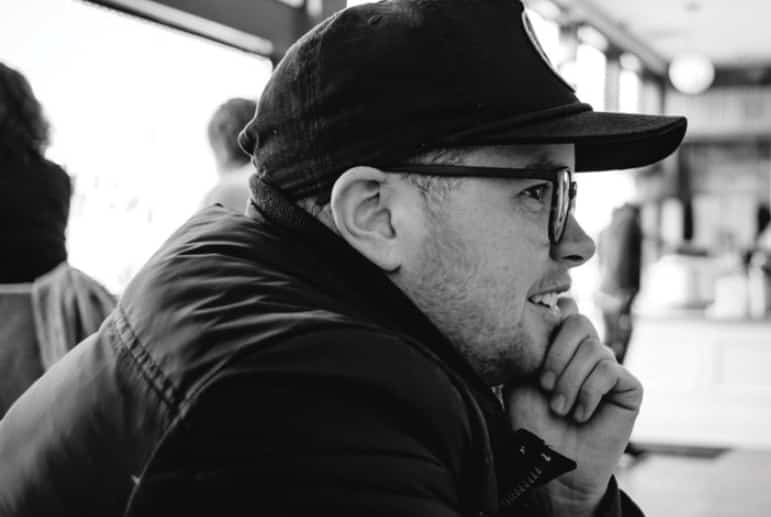For transgender people in Illinois, solid access to healthcare offers relief
Thirty years ago, when he was just 3 years old, Tristan Connor knew he didn’t identify as a girl, even though he was assigned female at birth. He didn’t have the words to say it then or even later in his teens. Growing up during the 1990s and early 2000s, Connor didn’t have transgender role models, social media, or YouTube to help find others like him or expose him to the vocabulary he craved.
It wasn’t until his late 20s that he realized he identified as a man. Then, he embarked on a series of gender-affirming surgeries — including a double mastectomy to remove his breasts, hysterectomy to remove his uterus, and phalloplasty to form a penis — that have helped shape him into who he is today.
The National Center for Transgender Equality describes transgender people as “people whose gender identity is different from the gender they were thought to be at birth.” In 2018, the Chicago Department of Public Health estimated that around 10,500 people who identify as transgender live in Chicago, or about 0.5% of the population.
Governor J.B. Pritzker has been an outspoken advocate in protecting the rights of transgender people. In 2020, the state of Illinois affirmed that people couldn’t be discriminated against based on sexual orientation or gender identity. Prior to that, in 2019, Pritzker signed an executive order aimed at protecting transgender students.
But in other states, the situation differs markedly. In 2021, more than 35 bills have been introduced across the country that would limit minors’ access to gender-affirming surgeries.
Trans transitions
Connor, who recently moved to the St. Louis area but returns to Chicago for medical care, openly shares his experience with others who are figuring out their own path, including young people. Every other week, he volunteers his time to speak with an online group of 13-, 14-, and 15-year-old male-identifying teens who live in a southwest Chicago suburb.
He assures them that they can have a fulfilling life as a transgender person. “They’re like, ‘Can I have a girlfriend? Can I have a job?’ And I’m like, ‘Yes!’” he says.
When I was going through puberty, it was very depressing for me. I literally felt like my body was changing in a way that I didn’t want it to.”
Many of the group members recently started taking testosterone, and they often talk about the pressures they’re feeling in school. They also talk about what’s happening across the country, namely the recent spate of bills that would prohibit minors like them from accessing gender-affirming care in certain states.
Connor hopes the teens will be spared some of the challenges that he had to go through when he transitioned well after puberty. “When I was going through puberty, it was very depressing for me. I literally felt like my body was changing in a way that I didn’t want it to,” he says.
Years later, he watched his body change again — this time, in a way he wanted — as a male. He supports people who transition as youth. “If they have really supportive parents, and they’re able to transition so they don’t have to go through two puberties, I think that’s definitely a better way to go,” Connor says.
Increasing medical options
Loren Schechter, MD — who is one of Connor’s doctors — says he, too, feels fortunate to live in Illinois, a state where Medicaid recently began covering gender-affirming surgeries for people 21 and older diagnosed with gender dysphoria. Many private insurers in Illinois also cover gender-affirming surgeries and treatments.
“I think in Illinois we’re quite fortunate. We have the state government, which seems to be quite supportive of gender-affirming therapies, which, by the way, are medically necessary, safe, and effective,” says Schechter, director of The Center for Gender Confirmation Surgery at Weiss Memorial Hospital.
A recent study published in JAMA Surgery found that people who had gender-affirming surgeries were less likely to experience psychological distress and suicidal thoughts than those who didn’t have surgery.
Schechter says that in the past 30 years, access to care has greatly expanded for people with gender dysphoria — a medical condition that results from distress or discordance of who you know yourself to be and your anatomical characteristics.
In the last decade in particular, Schechter believes that greater social acceptance, along with changes in insurance and Medicaid coverage, have enabled more people to access care at an earlier age.
“Numbers have increased exponentially I would say, and the average and median age has lowered,” Schechter says. He estimates that in the late ’90s and early 2000s, he was performing about 20 gender-affirming procedures a year; now that number is closer to 200 per year.
Children and teens
At the Gender & Sex Development Program at Ann & Robert H. Lurie Children’s Hospital of Chicago — the first comprehensive program of its kind in the Midwest for gender nonconforming children and adolescents — co-Director Robert Garofalo, MD, and team see families with kids as young as 4 years old, as well as teens.
Garofalo says he and his colleagues work to promote the social, physical, and emotional well-being for people of all ages. For teens, for example, they may prescribe puberty blockers, also known as hormone blockers, which delay the onset of puberty and are reversible.
“It’s like hitting a pause button,” Garofalo says. “It’s giving young people and their families some time to think through, developmentally, what are the next best options for them.” Surgery, such as breast reduction for male-identifying patients, may also be an option for some teens.
Garofalo emphasizes that the treatments and procedures are never taken lightly. Patients and their families meet with behavioral health therapists as well as primary care doctors to explore their goals in initiating any kind of treatment. They’re also connected with support groups.
“These hormones, our care, the therapy, and the support groups are allowing a space and an opportunity for these young people or adults to just live their lives as their authentic selves,” Garofalo says.
Connor is grateful for all the care he found, and he’s happy to share his journey with teens today. “I love to see how excited they are to see these changes happening to their bodies, especially because they’re catching it right as they would be going through the other version of puberty,” he says.
Plus, when they talk to Connor, the teens see a version of what could await them in a few years: a 33-year-old trans man with a stable job, a wife, and a sense of gratitude for all he’s been through and the care he’s received along the way.













